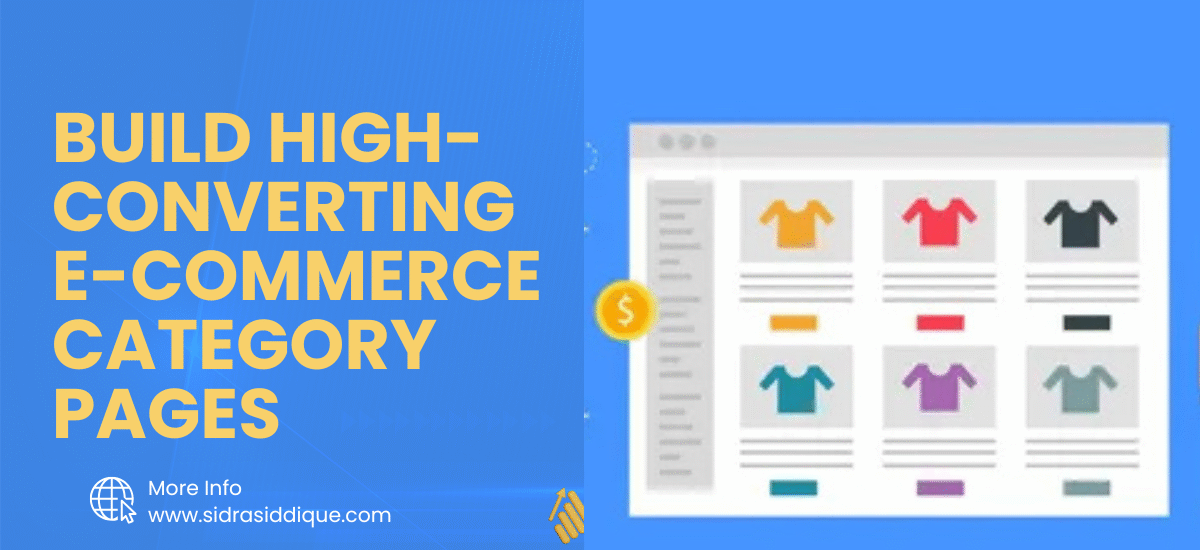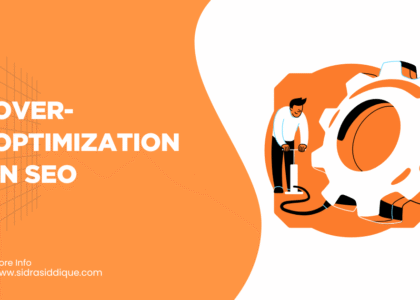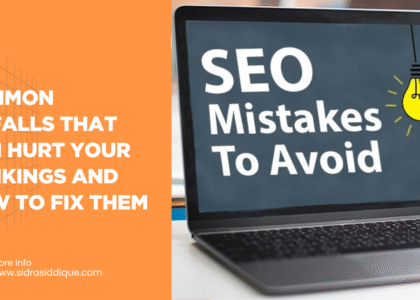Creating high-converting e-commerce category pages is one of the best ways to boost sales and improve user experience. These pages help visitors explore your products easily and make quick decisions. A smart design with the right features can guide users to the checkout faster.
When done right, category pages do more than show products — they help shoppers compare products quickly, provide personalized product recommendations, and display product badges and social proof that build trust. Using faceted navigation and a clean grid view and list view layout keeps things simple for shoppers. In this guide, you’ll learn how to build powerful category pages that turn clicks into conversions.
Why Category Pages Matter for Conversions
Many people don’t go straight to product pages. They land on your category page first. This is their starting point. If the page is messy, slow, or confusing, they leave. But if it’s smooth, fast, and helpful, they stay and buy.
That’s why category page SEO best practices for traffic and affordable mobile category UX enhancements are must-haves. These pages need to be fast on mobile, have smart breadcrumbs navigation, and be easy to explore through faceted navigation. With the right setup, category pages do more than organize products — they convert visitors into buyers.
1. Use Product Comparison Tools That Actually Help
Shoppers love choices, but too many choices can confuse them. That’s where interactive comparison tools for shoppers make a difference. These tools show product features side by side, letting people easily choose what suits them best.
This is how to help shoppers compare products quickly without jumping to multiple tabs. Add simple tables showing size, price, reviews, and availability. Make it work on mobile too for a smooth experience.
2. Layouts That Don’t Confuse: Grid View and List View
Some users like to see many products at once. Others prefer details. So, give both. Use grid view and list view layout options. These views let customers switch the layout based on their shopping style.
Grid views show more items with pictures. List views give details like description and price. Offering both helps in ways to lower cognitive load on category pages and improves overall satisfaction.
3. Filters That Make Sense
Filters are powerful — if used right. Add category specific filters and sorting such as price, color, material, or customer ratings. This makes product discovery faster and smarter.
If users can’t narrow down their choices, they get frustrated. Use how to optimize filters and sorting by category to build filters that make sense for your niche.
4. Add Hover Effects and Quick Shop Buttons
A small hover can do big things. Use quick shop / hover add to cart features. When users hover over a product image, show them options like “Add to Cart” or “Quick View.”
This simple move saves time and helps people buy faster. It’s a smart tactic in strategies for increasing category page conversions.
5. Banners That Catch Attention
People don’t just look at products. They also notice messages. Use featured banners and content blocks to highlight sales, offers, and top-rated items.
These banners also help in behavioral personalization ecommerce category pages, showing content based on visitor interests. Make sure banners are mobile-friendly and fast to load.
6. Personalize Product Suggestions
Don’t show the same products to everyone. Use personalized product recommendations based on browsing behavior, past purchases, or what’s trending. This is how to personalize category page product suggestions the smart way.
This keeps customers engaged longer and often increases basket size. It’s also useful in adding structured data/schema to category pages for SEO.
7. Breadcrumbs That Guide Users
Users should always know where they are. Use smart breadcrumbs navigation so they can go back or explore related categories. For example: Home > Women > Shoes > Heels.
It helps with navigation and supports optimizing category URLs and canonical tags, which improves search rankings too.
8. Mobile-Friendly Design is Non-Negotiable
Your users are on phones. Make your layout mobile optimized category layout with touch-friendly filters, easy scrolls, and readable fonts.
Apply mobile category page usability tips such as sticky filters and thumb-friendly buttons. It boosts conversions on small screens and helps in affordable mobile category UX enhancements.
9. Choose Between Pagination and Infinite Scroll
This is important: should users click to go to the next page or should products load as they scroll?
Pagination vs infinite scroll is a hot debate. Why pagination improves UX on category pages is because users can take breaks, bookmark pages, and feel more in control.
| Feature | Pagination | Infinite Scroll |
| Easier for SEO | ✅ | ❌ |
| Bookmark Friendly | ✅ | ❌ |
| Continuous Flow | ❌ | ✅ |
| Control Over Browsing | ✅ | ❌ |
10. Use Amazing Product Images
Images sell. Use animated and 360° product images to give shoppers a complete view. These work great for fashion, furniture, and tech items.
It’s also part of best practices for image optimization in ecommerce. Use compressed images, correct formats, and alt tags for speed and SEO.
11. Product Variations Should Be Easy to Pick
Size. Color. Style. Let users choose these without opening new pages. Product variation selectors like swatches or dropdowns help a lot.
This saves time and makes checkout faster. It’s also useful in ways to make product discovery easier.
12. Show What’s Been Viewed Recently
People forget. Show recently viewed browsing history on the side or bottom of the page. Let users go back to items they liked.
This feature increases return visits and conversions. It also helps customers feel their journey is remembered — key to behavioral personalization ecommerce category pages.
13. Add Badges and Trust Signals
Badges like “Best Seller,” “New Arrival,” and “Only 2 Left” create urgency. Add product badges and social proof to tell customers what’s hot.
Also show product ratings and reviews. It helps with product rating sorting and trust signals, making buyers more confident.
Bonus Tip: Add Wishlist Functionality
Let users save products for later. Implementing wishlist on category pages improves return traffic. It also helps in building email campaigns based on saved items.
Final Thoughts: The Future of Category Pages
Category pages are no longer simple product listings. They are dynamic, smart, and designed to drive conversions. With features like interactive comparison tools for shoppers, personalized product recommendations, and structured filters, you’re not just helping users — you’re guiding them to buy.
Start using these tips today. Keep your layout clean. Optimize for mobile. Test your changes. And always keep the user first.
A well-built category page = higher traffic, longer sessions, and more sales.
FAQs About Ecommerce Category Pages
1. How Many Words Should a Category Page Have for SEO?
A good e-commerce category page should have at least 300–500 words of relevant content. This helps search engines understand the page and improves keyword targeting while offering value to the user.
2. Should You Index Category Pages?
Yes, indexing category pages is important if they provide unique value and are well-optimized. Make sure they have proper content, internal links, and user-focused elements to avoid thin content penalties.
3. How Do Categories and Tags Impact SEO?
Categories help organize your content for users and search engines, improving site structure and crawlability. Tags can support related content, but overusing them may lead to duplicate content issues.4. Can Category Pages Rank Without Content?
Technically yes, but it’s difficult. Category pages without content miss the opportunity to rank for relevant keywords and may provide poor user experience, affecting SEO performance and conversions.




